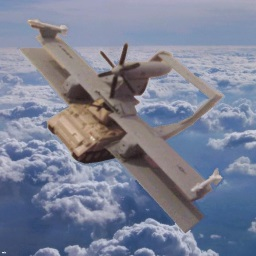https://wikipedia.org/wiki/Battle_of_Khasham
Bonus video from The Operations Room: https://youtube.com/watch?v=T6Ii45jxsLE
Wherein the pro-Assad coalition enters the phase known as FO, which here stands for “finding out what annoyed JTAC can do.”
how come the russian flag isn’t listed among the “belligerents”, were these mercenaries or booted and suited ruskies?
Wagner PMC
If this is what I think it is, the US called Russia on the hotline and received assurances that no Russians were in the area. So that’s the way it must have been. Surely Russia wouldn’t lie on the hotline??
A beautiful piece of military history. Was so happy when the operations room dropped the animation. Honestly didn’t know the attack was as coordinated as it was, which makes the absolute dicking the US delivered even better.
What about Archangel?
https://en.wikipedia.org/wiki/North_Russia_intervention
https://en.wikipedia.org/wiki/American_Expeditionary_Force,_North_Russia
Also, same time:
https://en.wikipedia.org/wiki/American_Expeditionary_Force,_Siberia
I guess you could maybe make an argument that it wasn’t fighting the Russian state, insofar as there wasn’t much of a Russian state at that point, or that the US wasn’t specifically looking to fight Russian forces. Or maybe that Imperial Russia wasn’t the Russian Federation.
But then, you could probably also take issue with the Battle of Khasham insofar as Wager technically wasn’t Russian military and as far as I know wasn’t openly acting for Russia.
And you probably also gotta consider Soviet forces acting covertly in the Korean War.
https://en.wikipedia.org/wiki/Soviet_Union_in_the_Korean_War
Soviet pilots were active in Korea from November 1950. In order to hide this direct Soviet intervention, precautions were taken to disguise their involvement, open knowledge of which would have been a major diplomatic embarrassment for the USSR.
Soviet pilots wore Chinese uniforms when flying, whilst rules were prescribed to stop Soviet pilots flying near the coast or front lines (where they might be captured if shot down) and from speaking Russian on the aircraft radio. All aircraft flown carried Chinese or North Korean markings.[16] When not flying, for reasons of ethnicity, on the ground Soviet pilots ‘played’ the roles of Soviet commercial travellers rather than Chinese or North Korean soldiers.
Soviet pilots flying MiG-15 jets participated in battles around the Yalu River Valley on the Chinese-Korean border in the area known as “Mig Alley” and in operations against UN “trainbusting” attacks in Northern Korea, with considerable success.
The lack of a shared language between Soviet, Chinese and North Korean pilots frequently led to friendly fire as other MiG fighters were mistaken for American F-86 Sabre jets and shot down.[17]
Military lovers freaks
Don’t cry





